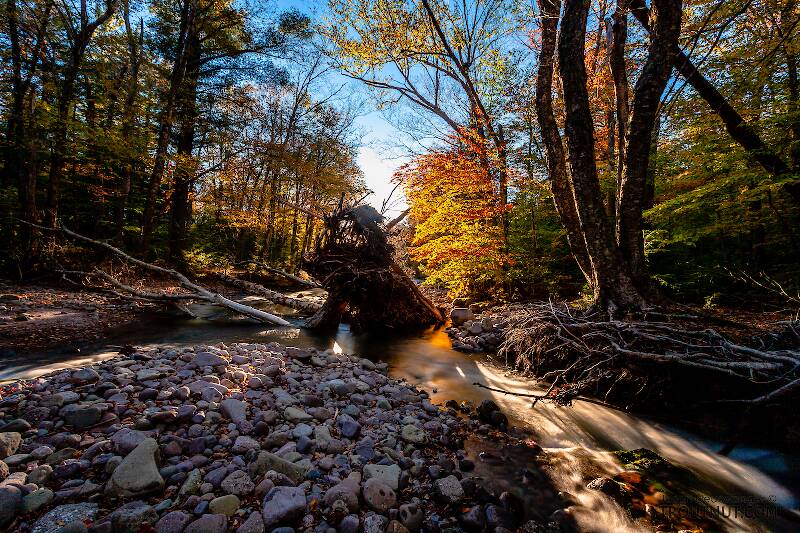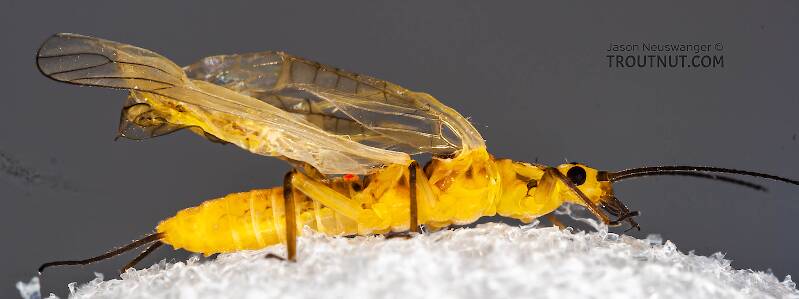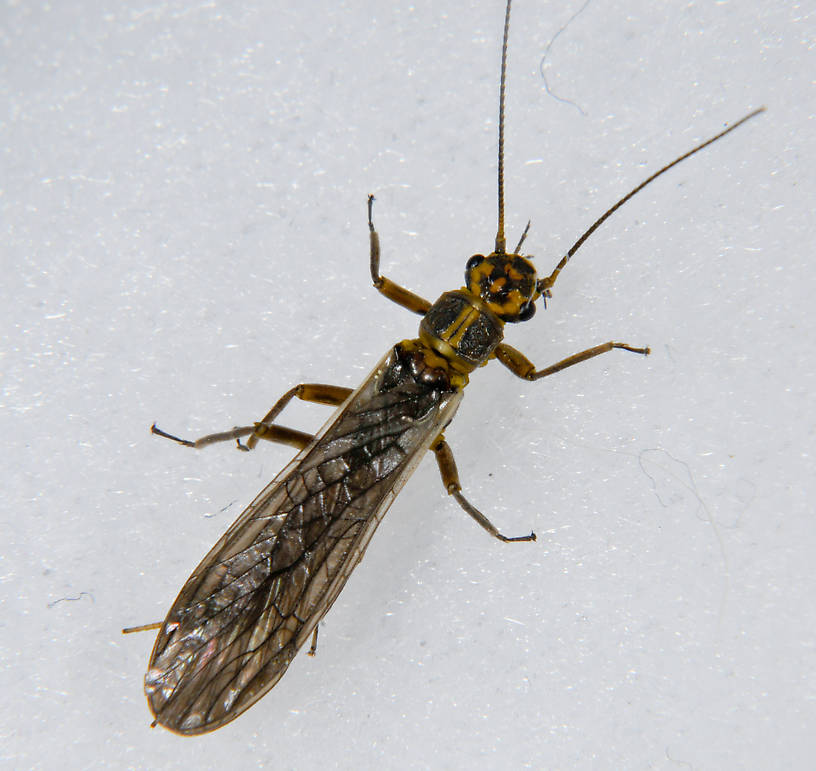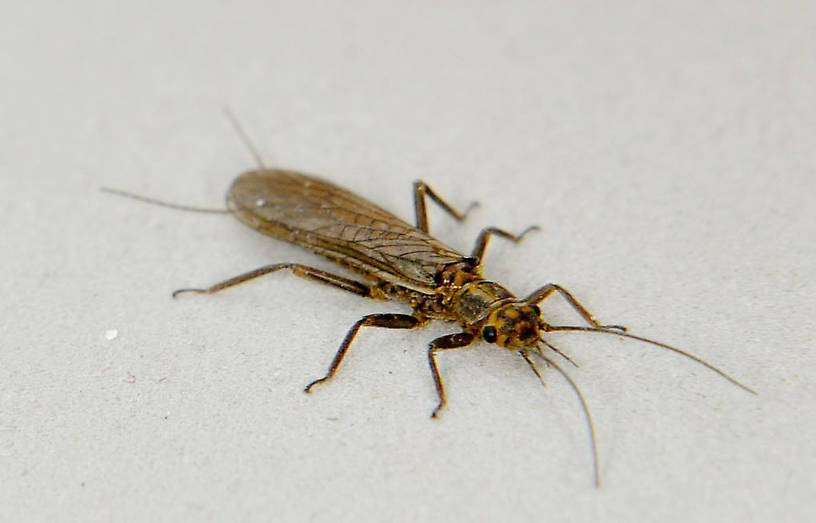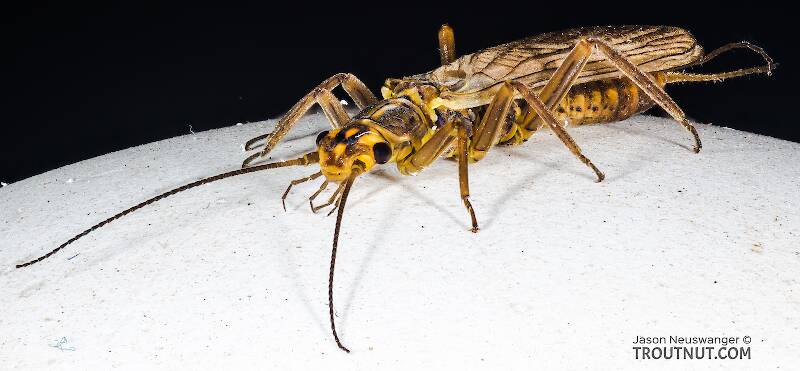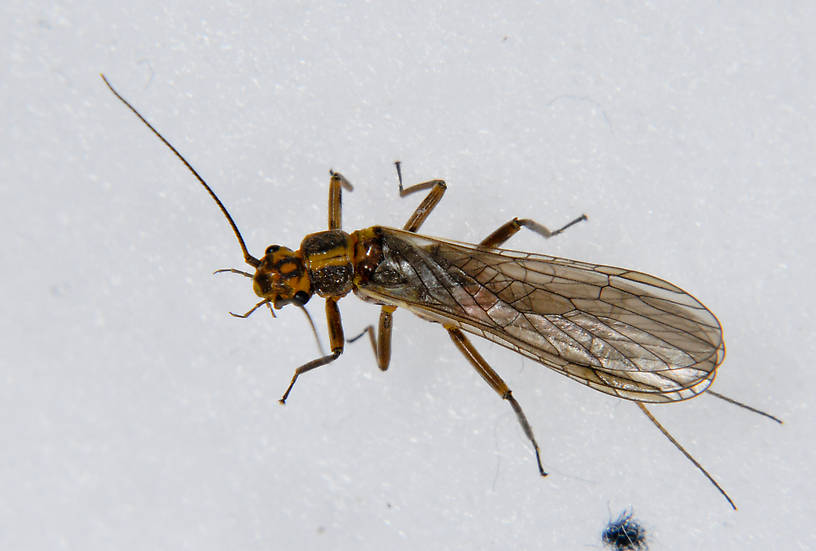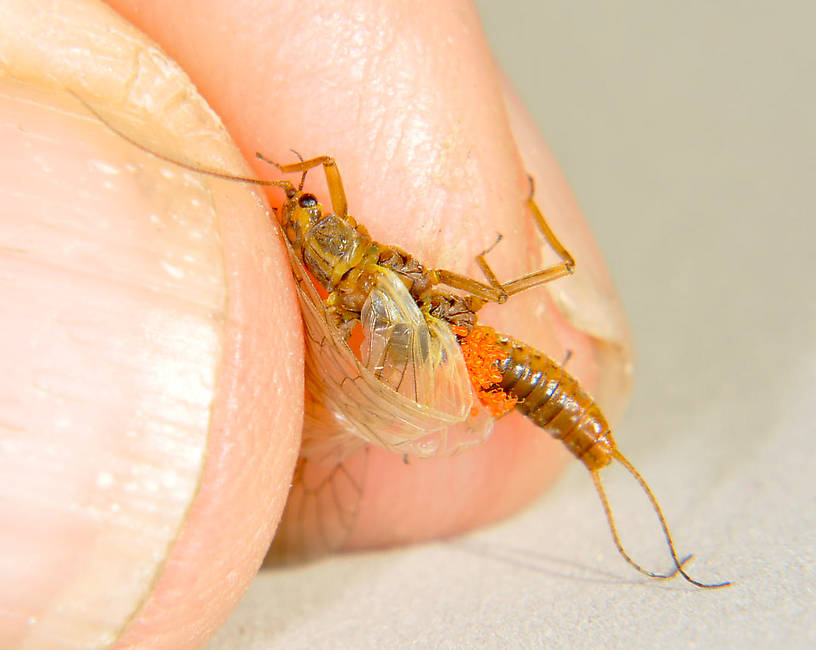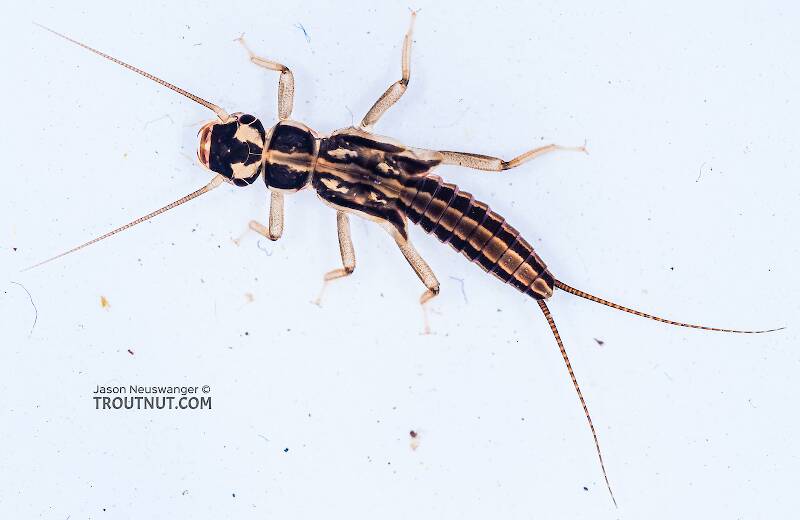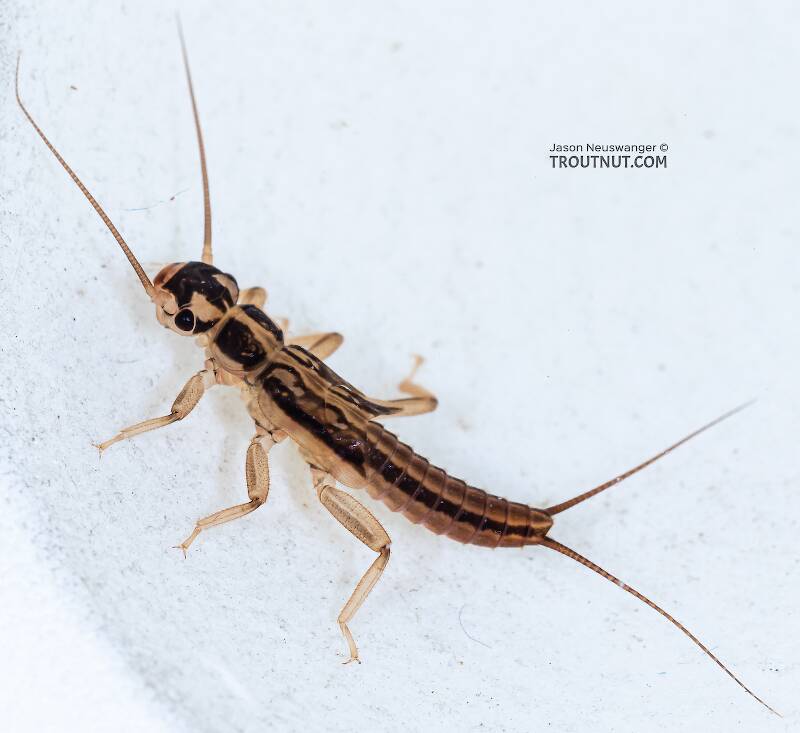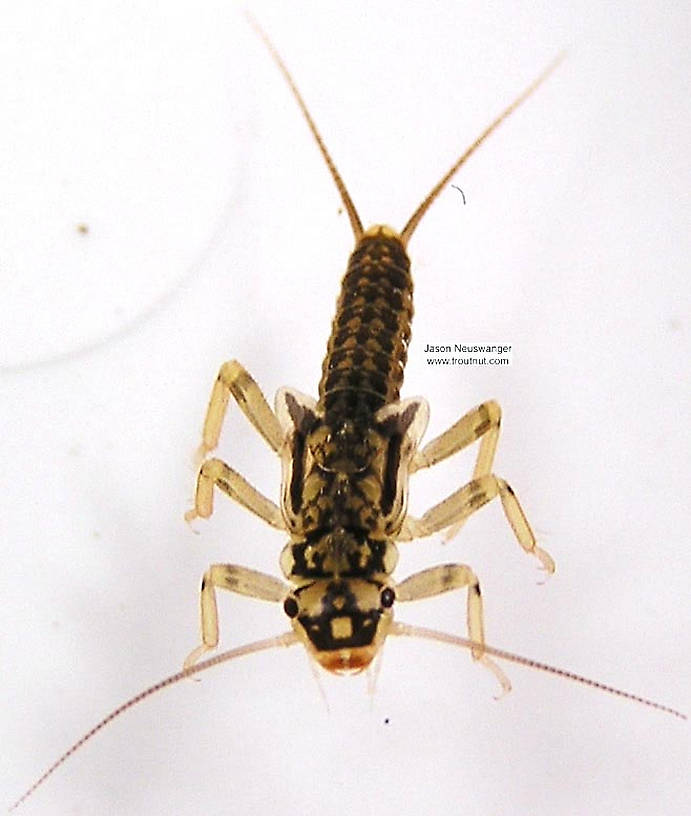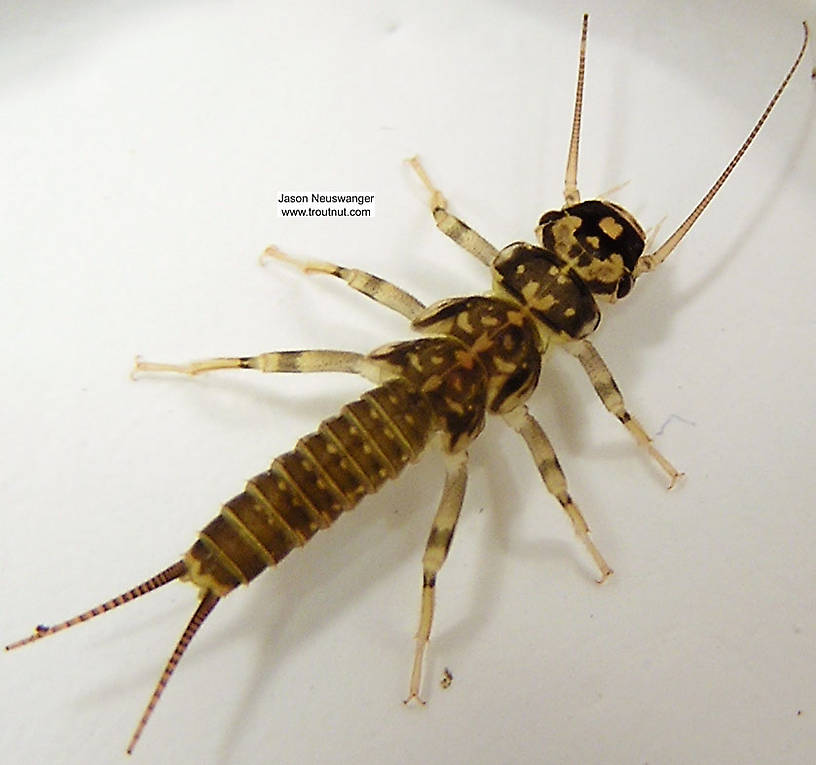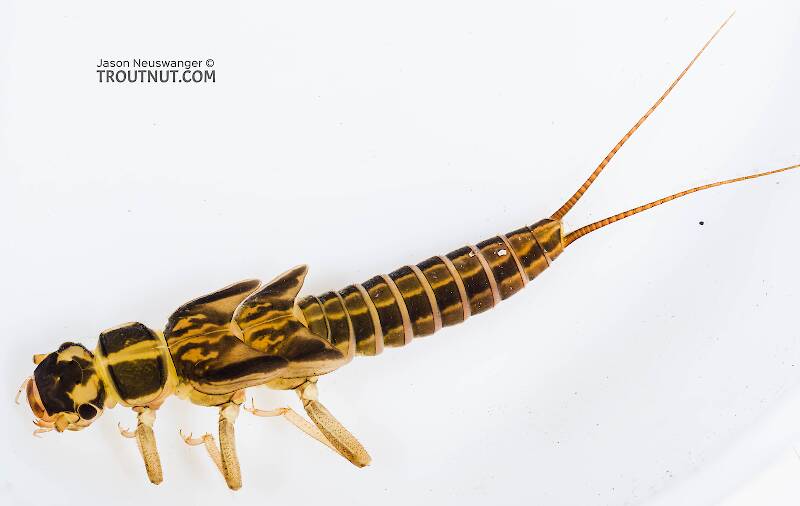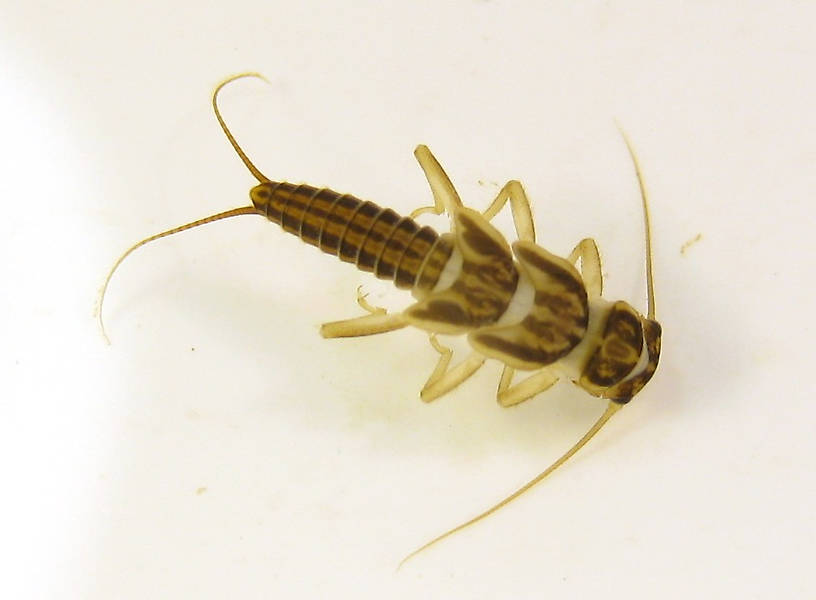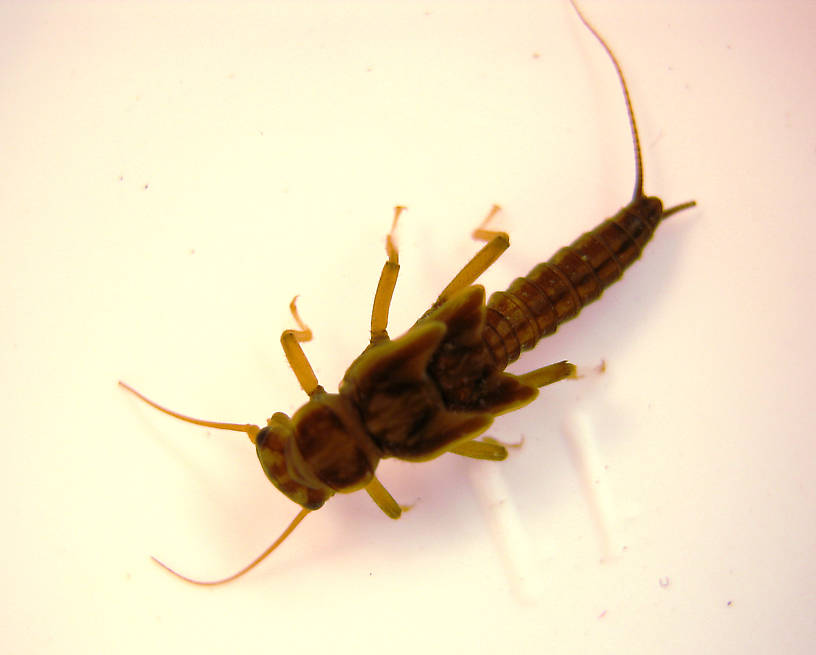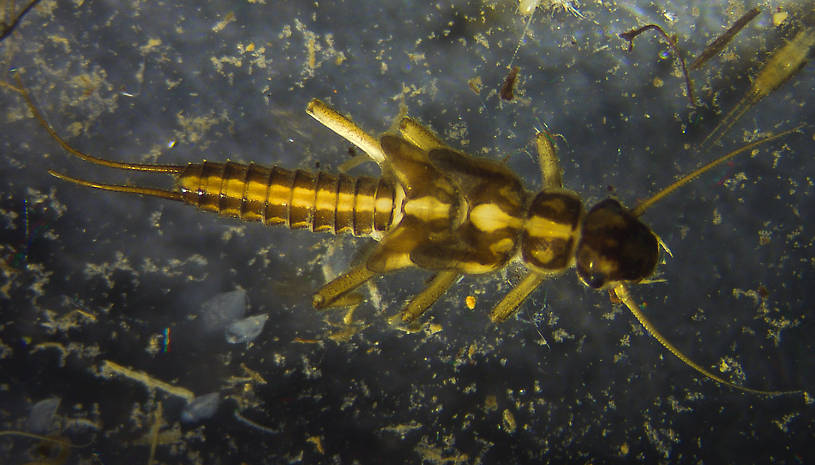
Blue-winged Olives
Baetis
Tiny Baetis mayflies are perhaps the most commonly encountered and imitated by anglers on all American trout streams due to their great abundance, widespread distribution, and trout-friendly emergence habits.
Featured on the forum

Troutnut is a project started in 2003 by salmonid ecologist Jason "Troutnut" Neuswanger to help anglers and
fly tyers unabashedly embrace the entomological side of the sport. Learn more about Troutnut or
support the project for an enhanced experience here.
Stonefly Genus Isoperla (Stripetails and Yellow Stones)
This is a very common trout stream stonefly genus. It is also huge, with sixty species scattered over the entire continent. Though anglers usually call them Little Yellow Stones or Yellow Sallies, the scientific common name for this genus is Stripetail. The latter is probably better to use as not all of them are necessarily little or yellow.
Genus Range
Specimens of the Stonefly Genus Isoperla
5 Adults
3 Male Adults
1 Female Adult
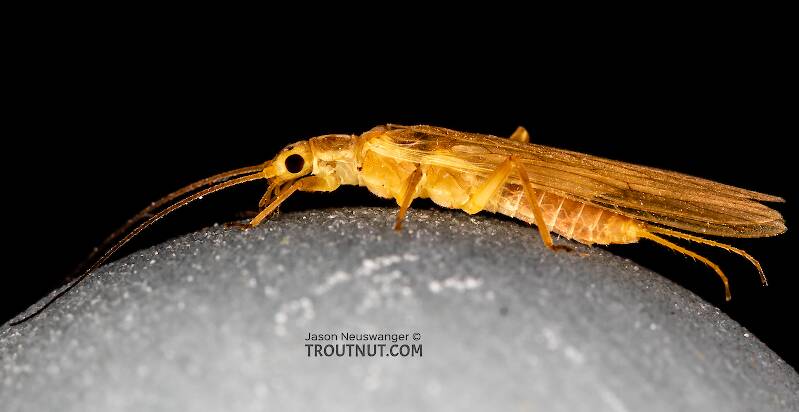
The family ID on this one was a little bit tricky. Just going by the size, shape, and color, it looks like Chloroperlidae. However, the second anal vein of the forewing is does not appear to be forked, and the apical maxillary palpal segment is close to the length of the penultimate segment, both of which rule out that family. The position of the cubitoanal crossvein relative to the anal cell in the forewing -- touching it in this case -- indicates Perlidae (and it really doesn't have the "look" of Perlidae at all), but other characteristics, such as the metathorastic sternacostal sutures and lack of gill remnants, point to Perlodidae. That's the right answer. Moving on to Perlodidae, the key characteristics in Merritt & Cummins lead straightforwarly to Isoperla, and the species key in Jewett 1959 (The Stoneflies of the Pacific Northwest) leads to Isoperla fusca.
There is one caveat: That source does suggest a May-July emergence, whereas this one was collected in mid-September.
There is one caveat: That source does suggest a May-July emergence, whereas this one was collected in mid-September.
8 Nymphs
Start a Discussion of Isoperla
References
- Schwiebert, Ernest G. 1955. Matching the Hatch. MacMillan Publishing Company.
Stonefly Genus Isoperla (Stripetails and Yellow Stones)
Taxonomy
Species in Isoperla
Isoperla aculaFresno Stripetail
0
0
Isoperla aduncaArroyo Stripetail
0
0
Isoperla baumanniCalifornia Stripetail
0
0
Isoperla bifurcataForked Stripetail
0
0
Isoperla bilineataTwo-lined Stripetails
0
0
Isoperla burksiBanded Stripetail
0
0
Isoperla denningiAngeles Stripetail
0
0
Isoperla dicalaSable Stripetails
0
0
Isoperla fulvaWestern Stripetails
5
28
Isoperla fuscaWaterton Stripetails
3
37
Isoperla gibbsaeQuebec Stripetail
0
0
Isoperla holochloraPale Stripetail
0
0
Isoperla marlyniaMidwestern Stripetails
0
0
Isoperla marmorataRed Stripetail
0
0
Isoperla miwokMiwok Stripetail
0
0
Isoperla montanaMontane Stripetail
0
0
Isoperla mormonaMormon Stripetail
0
0
Isoperla pintaCheckered Stripetails
0
0
Isoperla quinquepunctataLittle Yellow Stoneflies
2
5
Isoperla rainieraRainier Stripetail
0
0
Isoperla roguensisRogue Stripetail
0
0
Isoperla signataTransverse Stripetails
0
0
Isoperla similisBlack Stripetail
0
0
Isoperla sobriaColorado Stripetails
0
0
Isoperla sordidaNotched Stripetails
0
0
Isoperla tilasquaOregon Stripetail
0
0
Species in Isoperla: Isoperla acula, Isoperla adunca, Isoperla baumanni, Isoperla bifurcata, Isoperla bilineata, Isoperla burksi, Isoperla denningi, Isoperla dicala, Isoperla fulva, Isoperla fusca, Isoperla gibbsae, Isoperla holochlora, Isoperla marlynia, Isoperla marmorata, Isoperla miwok, Isoperla montana, Isoperla mormona, Isoperla pinta, Isoperla quinquepunctata, Isoperla rainiera, Isoperla roguensis, Isoperla signata, Isoperla similis, Isoperla sobria, Isoperla sordida, Isoperla tilasqua
34 species (Isoperla bellona, Isoperla conspicua, Isoperla cotta, Isoperla coushatta, Isoperla davisi, Isoperla decepta, Isoperla decolorata, Isoperla distincta, Isoperla emarginata, Isoperla extensa, Isoperla francesca, Isoperla frisoni, Isoperla grammatica, Isoperla gravitans, Isoperla irregularis, Isoperla jewetti, Isoperla katmaiensis, Isoperla lata, Isoperla longiseta, Isoperla major, Isoperla maxana, Isoperla mohri, Isoperla namata, Isoperla nana, Isoperla orata, Isoperla ouachita, Isoperla petersoni, Isoperla phalerata, Isoperla punctata, Isoperla richardsoni, Isoperla sagittata, Isoperla slossonae, Isoperla szczytkoi, and Isoperla transmarina) aren't included.

